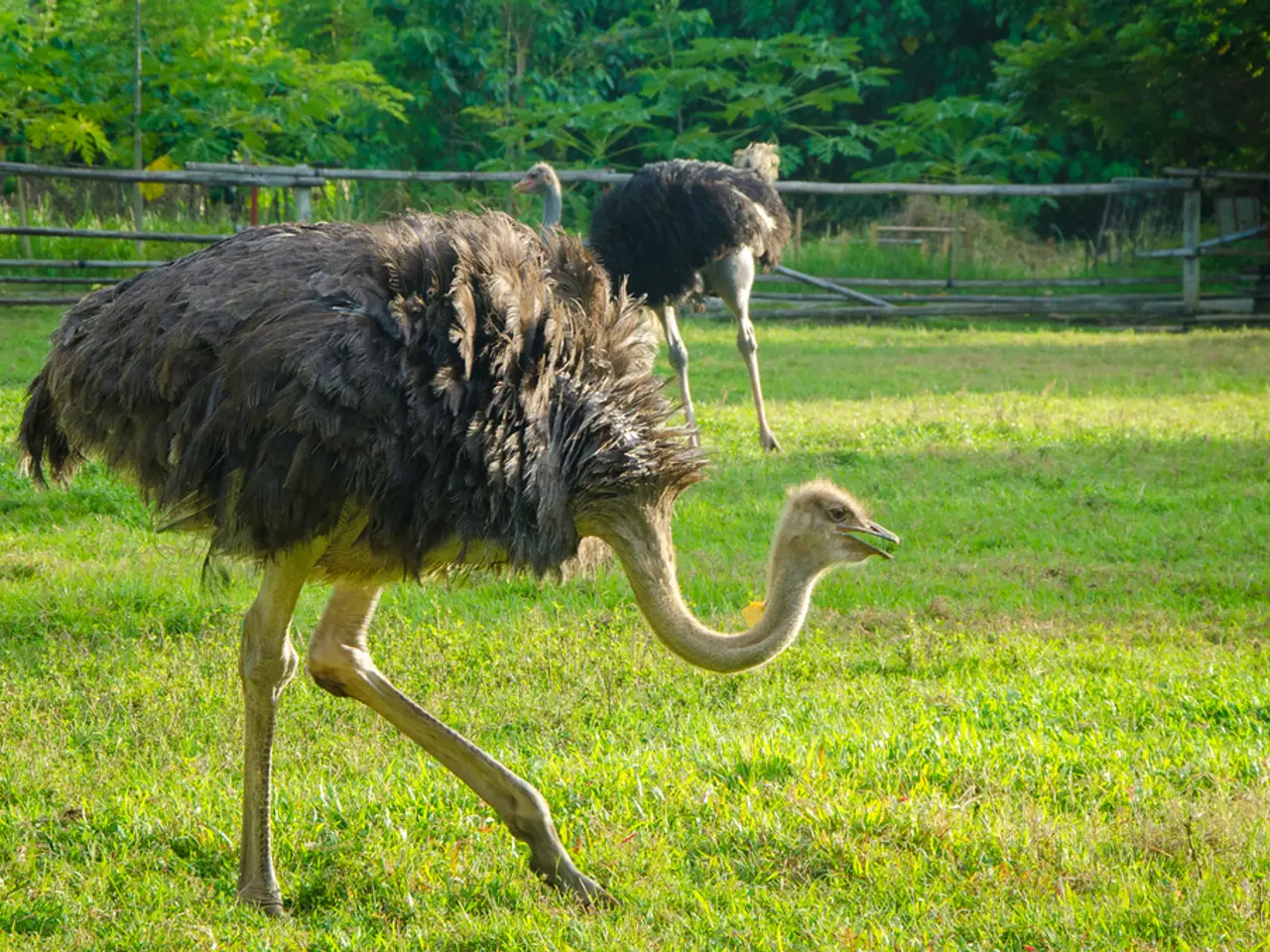Vet professionals left bewildered in a cloud of dust amidst an escape by a wayward ostrich in the African savannah.
In the heart of Machakos County, Kenya, a team of wildlife veterinarians embarked on an unusual mission. Led by Dr Mukami Ruoro Oundo, they set out to treat an ostrich with lesions, suspected to be caused by ticks. The ostrich, a majestic black-feathered male with a conspicuous pink neck, was spotted in Konza Technopolis, a bustling area known for its well-structured buildings, high-end higher learning institutions, and broad avenues.
The mission was far from straightforward. Ostriches are notoriously difficult to dart, as they only have a safe place to dart (the thigh) and they don't always oblige. Dr Mukami explained the challenge, "It's a task to dart an ostrich. They are large and powerful creatures with a high running speed, making capture a complex endeavour."
Two green Land Rovers entered Konza Technopolis, carrying ten people, including wildlife veterinarians, vet interns, and capture rangers. The ostrich, accompanied by his two grey-feathered females, proved to be a swift and agile adversary. As the vehicles approached, the ostrich evaded capture by shifting positions and moving away. His physiology worked against the vet team, as he had long, powerful legs, huge lung capacity, and the highest running speed of any two-legged creature on Earth, capable of achieving speeds of up to 97 km/h in short bursts.
The ostrich's health threats in the wild include internal parasites such as tapeworms and various intestinal parasites, as well as external parasites like ticks. Additionally, avian diseases like the highly pathogenic H5N1 avian influenza virus pose a significant risk.
Focusing on Konza Technopolis, the veterinarians would likely address parasite control with anti-parasitic medications, disease management through diagnostic testing and biosecurity measures, and supportive care including hydration, nutritional support, and wound treatment if injuries occur.
After nearly an hour of patient maneuvering, Dr Mukami took aim and fired a dart, but it bounced off too quickly. Some drug was seen to have gone into the ostrich, but not enough, according to Dr Mukami. As the sun inched lower and the wind became harsher, making it dangerous to dart the animal in fading light, the team decided to retreat, vowing to return another day.
The ostrich's escape underscored the challenges faced by wildlife veterinarians in treating animals in the wild. Further research or veterinary reports from the region might provide more localized data, offering insights into the unique health threats and treatment methods for ostriches in East African savannah environments.
- The mission of wildlife veterinarians in Machakos County focused on more than just treating the ostrich with lesions; they also aimed to address parasite control with anti-parasitic medications, manage diseases through diagnostic testing and biosecurity measures, and provide supportive care like hydration and nutritional support.
- Ostriches in the wild face numerous health threats, such as internal parasites like tapeworms and intestinal parasites, external parasites like ticks, and diseases such as the highly pathogenic H5N1 avian influenza virus.
- The field of health and wellness expands beyond human medicine, with veterinary science playing a crucial role in monitoring, treating, and understanding medical conditions in various animal species, like the ostriches in East African savannah environments.




